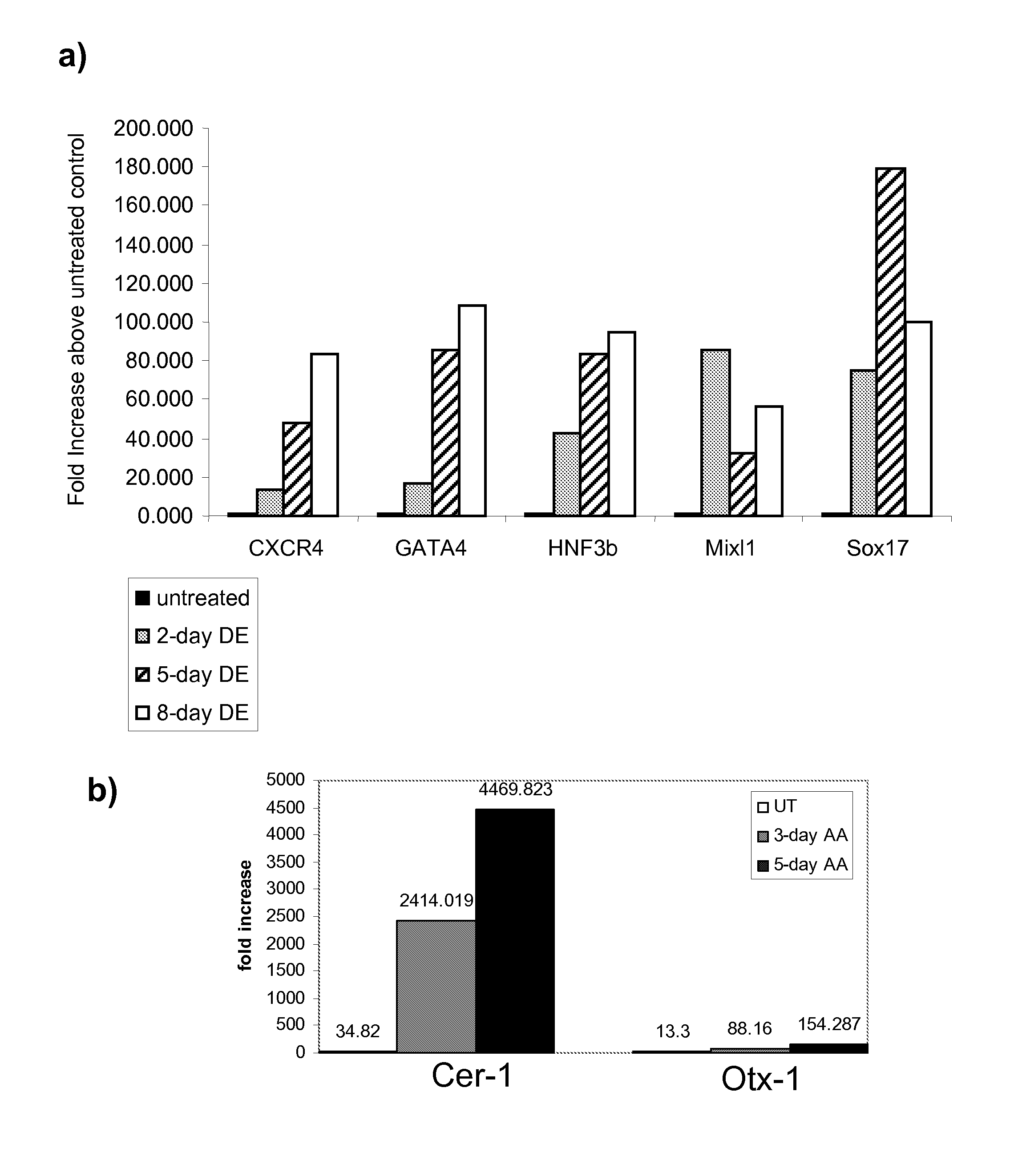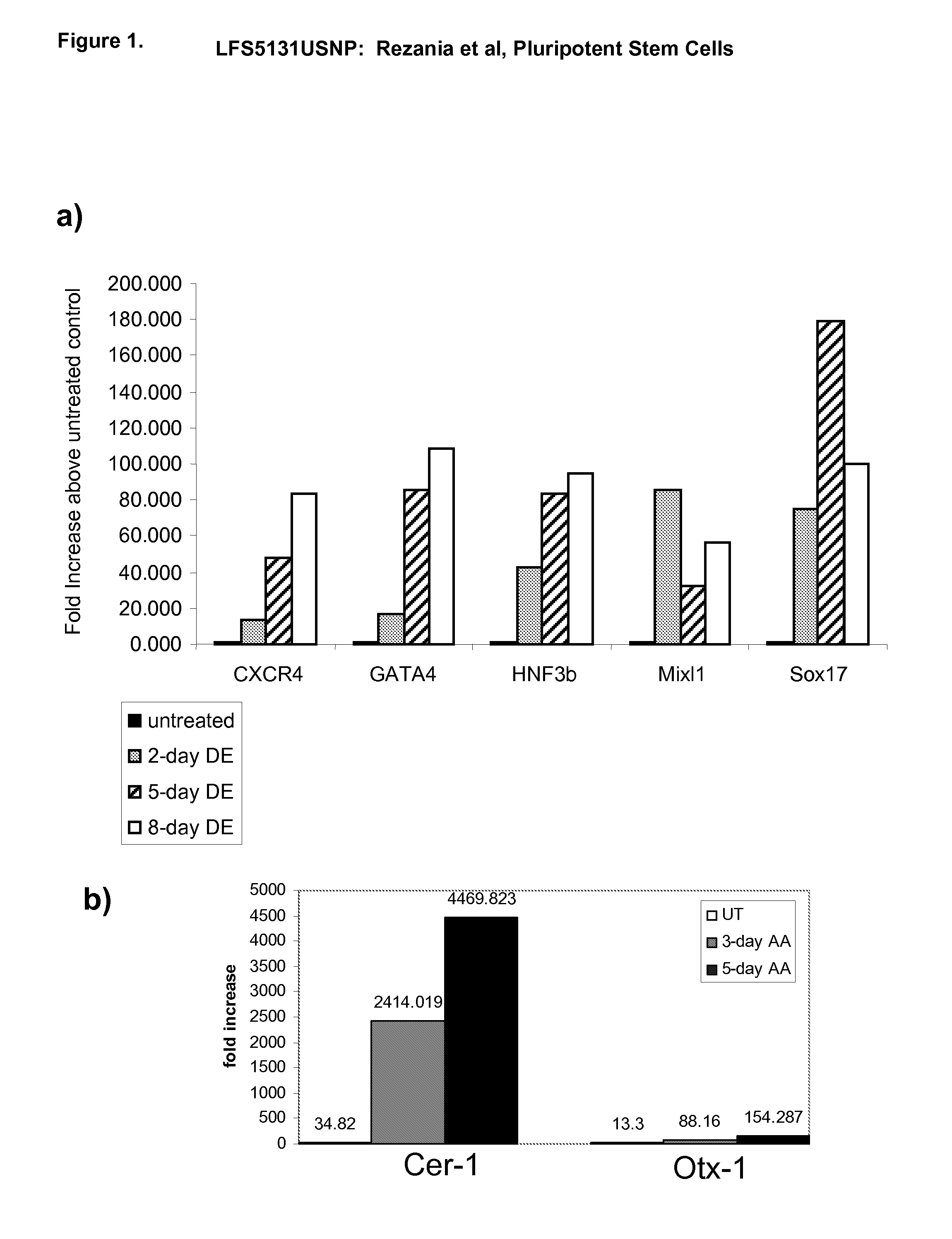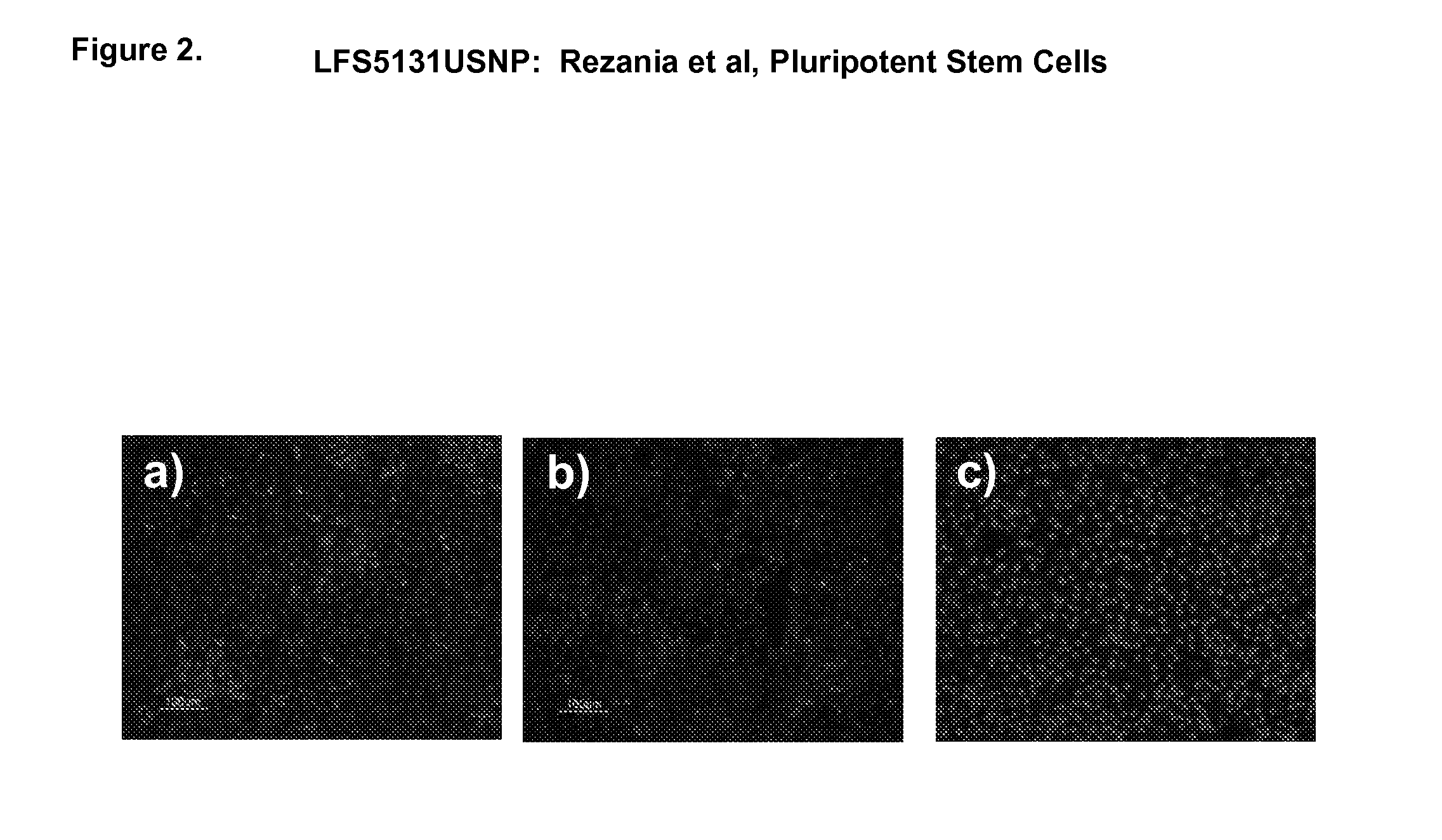Differentiation of human embryonic stem cells
a technology of embryonic stem cells and differentiation, applied in the field of methods, can solve the problems of insufficient expression of definitive endoderm markers in h-lines cultured on matrigelTM (1:30 dilution) and treated with the definitive endoderm protocol, and the mouse model of embryonic stem cell development may not exactly mimic the developmental program of higher mammals
- Summary
- Abstract
- Description
- Claims
- Application Information
AI Technical Summary
Benefits of technology
Problems solved by technology
Method used
Image
Examples
example 1
Human Embryonic Stem Cell Culture
[0324] The human embryonic stem cell lines H1, H7 and H9 were obtained from WiCell Research Institute, Inc., (Madison, Wis.) and cultured according to instructions provided by the source institute. Briefly, cells were cultured on mouse embryonic fibroblast (MEF) feeder cells in ES cell medium consisting of DMEM / F12 (Invitrogen / GIBCO) supplemented with 20% knockout serum replacement, 100 nM MEM nonessential amino acids, 0.5 mM beta-mercaptoethanol, 2 mM L-glutamine with 4 ng / ml human basic fibroblast growth factor (bFGF) (all from Invitrogen / GIBCO). MEF cells, derived from E13 to 13.5 mouse embryos, were purchased from Charles River. MEF cells were expanded in DMEM medium supplemented with 10% FBS (Hyclone), 2 mM glutamine, and 100 mM MEM nonessential amino acids. Sub-confluent MEF cell cultures were treated with 10 μg / ml mitomycin C (Sigma, St. Louis, Mo.) for 3 h to arrest cell division, then trypsinized and plated at 2×104 / cm2 on 0.1% bovine gelat...
example 2
Formation of Definitive Endoderm
[0325] The effects of activin A on the expression of markers of definitive endoderm were examined. Activin A (100 ng / ml) was added to populations of human embryonic stem cells cultured on mouse embryonic fibroblasts. Cells were cultured continuously in the presence of activin A and harvested at the times indicated. The level of expression of definitive endoderm markers was examined by PCR (FIG. 1), FACS (results summarized in Table II), and immunohistochemistry (FIG. 2).
[0326] Activin A evoked a time-dependent increase in the expression of CXCR4, GATA4, HNF-3beta, Mixl1 and Sox-17 mRNA in the H9 line (FIG. 1, panel a). A significant up regulation of anterior endoderm markers, Cerberus, Otx-1 and Hex genes was also observed (FIG. 1, panel b). An increase in CXCR4 protein was observed by FACS analysis following activin A treatment. The expression of E-cadherin and N-cadherin did not change following activin A treatment (Table IIA). CXCR4 positive cell...
example 3
Formation of Pancreatic Endoderm
[0327] Growth factors known to induce the differentiation of human embryonic stem cells to pancreatic endoderm were added to cell cultures. In particular, activin A, bFGF, and retinoic acid, known to induce the formation of pancreatic endoderm, were added to cell cultures.
[0328] In a first series of experiments, activin A, was added to populations of human embryonic stem cells cultured on mouse embryonic fibroblasts for up to seven days in DMEM / F12 supplemented with 0% to 2% serum and Activin A (100 ng / ml). Cells were harvested at the time points indicated in FIG. 3 and assayed by PCR for the expression of genes shown (FIGS. 3, 4 and 5). In FIG. 3, PCR analysis indicated that activin treated cells expressed a broad spectrum of genes associated with endoderm development, including GATA4 (FIG. 3, panel a), Sox-17 (FIG. 3, panel b), HNF-3beta (FIG. 3, panel c), and Mixl-1 (FIG. 3, panel d). However, no Pdx1 gene expression was observed. The same expres...
PUM
 Login to View More
Login to View More Abstract
Description
Claims
Application Information
 Login to View More
Login to View More - R&D
- Intellectual Property
- Life Sciences
- Materials
- Tech Scout
- Unparalleled Data Quality
- Higher Quality Content
- 60% Fewer Hallucinations
Browse by: Latest US Patents, China's latest patents, Technical Efficacy Thesaurus, Application Domain, Technology Topic, Popular Technical Reports.
© 2025 PatSnap. All rights reserved.Legal|Privacy policy|Modern Slavery Act Transparency Statement|Sitemap|About US| Contact US: help@patsnap.com



